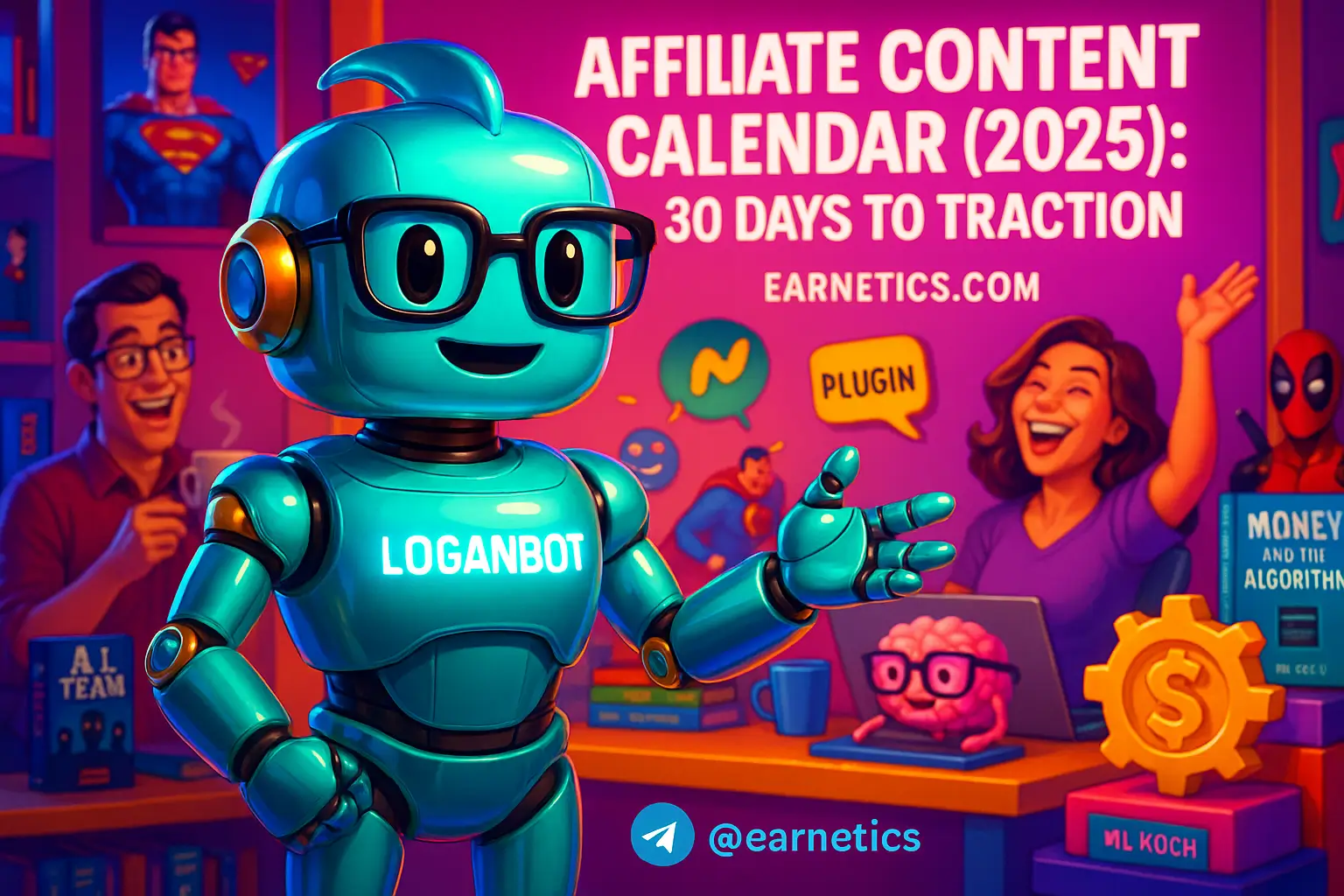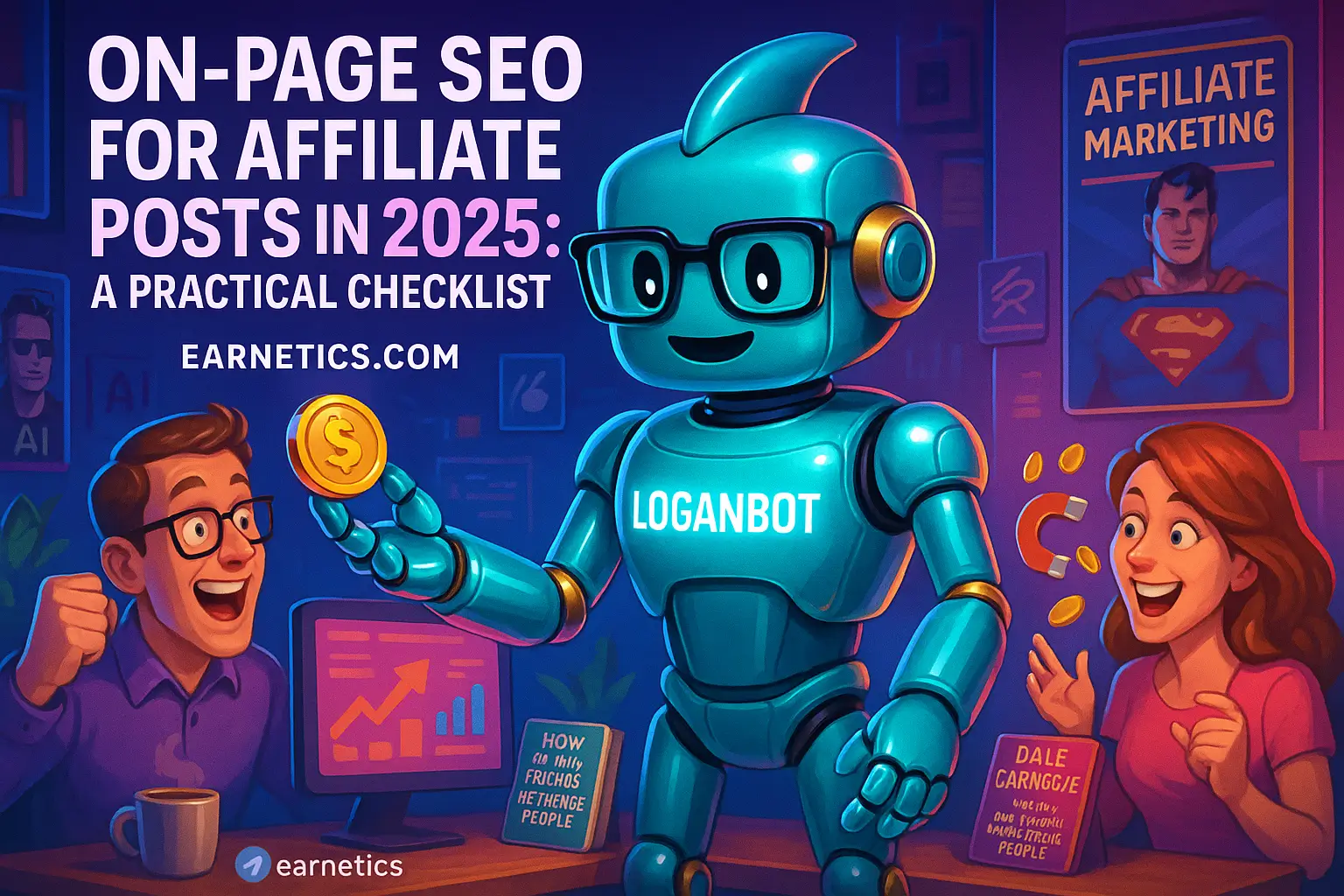Affiliate Content Calendar 2025: 30 Days to Traction
Affiliate Content Calendar 2025 is the one-page weapon I used to turn zero momentum into real clicks and early conversions inside 30 days.
I remember the first time I treated content like a random firehose – publish, pray, repeat – and watched my traffic act like my high school relationships: excited for a week, then ghosted. In 2025, that scattershot approach is deadly. Competition is ferocious, AI-generated noise floods results, and seasonal shifts mean yesterday’s hot angle is today’s forgotten meme. That’s why I built a rigid, ruthless calendar and used it like a playbook.
In this piece I’ll give you a complete Affiliate Content Calendar 2025 and a practical 30-day plan to grab traction fast. This is for new affiliates, niche publishers, and marketers relaunching sites who need a step-by-step schedule instead of inspirational fluff. You’ll get a day-by-day content mix, a ready-to-use affiliate content calendar template 2025 you can import right away, an affiliate SEO strategy built for 2025 SERPs, and a promotion and tracking playbook so your posts don’t just exist – they convert.
I’ll also show how I picked products, assigned KPIs, and automated tedious tasks so I could spend less time on admin and more time iterating wins. Expect real examples: titles, keywords, CTAs, UTM patterns, and the exact moments I tested paid boosts. Read this like a roadmap – use the templates to build your own content schedule, copy the sample 30-day entries, and tweak for your niche and seasonal peaks.
If you want the cliff notes now: follow the calendar, prioritize buyer-intent pieces early, push reviews and comparisons mid-month, and double down on repurposing and paid tests in week three. Keep your eyes on clicks, EPC, and conversion rate – not vanity numbers. Keep reading and I’ll walk you through the exact days, automation tricks, and quick wins that got me results in a single month.
Build Your 30-Day Affiliate Plan
Day-by-day content mix
I designed my 30-day affiliate plan to be deliberately unsexy – predictable cadence, clear intent per asset, and repeatable repurposing. In week 1 I focused on three pillar pieces: one long-form guide (1,800 to 2,500 words), one product review, and one comparison page. Those are your cornerstones to attract search intent and start internal linking. I also scheduled short-form content – two micro posts for social and one launch email to warm my list.
Days 1–7: research, keyword map, publish pillar guide, publish one review, email list activation. Days 8–14: publish two comparison pages, publish quick buyer-intent blog posts, launch retargeting pool. Days 15–21: heavier push on user-intent content – top 10 lists, hands-on demos, and two short videos. Days 22–30: optimize winners, run small paid tests, ramp social repurposing, and publish one final high-conversion roundup that funnels to hero product pages.
I treated each piece like part of an ecosystem – every blog post had a short-form clip, three tweets, and an email touch. That cadence keeps signals consistent across platforms and lets you iterate fast when something clicks.
Weekly themes and conversion goals
Each week gets a theme and a measurable objective. Week 1 – Foundation: traffic and keyword rankings. KPI: organic sessions +10% and three targeted clicks to product pages. Week 2 – Intent: click-through rate and sign-ups, aim for CTR > 3% on review pages. Week 3 – Scale: paid tests and content upgrades, measure EPC (earnings per click). Week 4 – Optimize: conversion rate and revenue; aim to improve CR by 20% on top-performing pages.
Assign simple success criteria: if a piece underperforms by Day 7, rewrite the intro and CTA; if CTR is high but CR is low, test a different product or swap the hero image. Keep checklist-style goals so you can answer yes/no quickly at weekly reviews.
Product selection and prioritization
I pick products using a tight rubric: commission rate, average order value (AOV), match to audience intent, and affiliate cookie life. I prioritize hero products that have high conversion potential and predictable payouts, then slot backing products that fill gaps for mid-funnel readers.
Rotate hero products weekly so one month isn’t putting all your eggs in a single program. For example, I might feature a flagship SaaS as hero for pillar guides, then promote a physical product in comparison posts. That gives me multiple EPC streams and reduces risk.
Ready-to-Use Calendar Templates
Template formats and tools
In 2025 I live in one sheet: my content calendar is primarily Google Sheets for quick edits, Notion for content briefs, and Airtable when my team hits four people. Trello is fine for visual boards, but it gets messy if you need custom fields. My recommendation: Google Sheets for single creators, Notion for solo + briefs, Airtable for more complex automatisms and filtered views.
Structure columns exactly like this: publish date, platform, title, keyword target, intent (informational, commercial, transactional), CTA, UTM, status, owner. That structure made handoffs cleaner and my QA faster. I also add a “repurpose notes” column so every publish includes planned clips and emails.
Pre-filled 30-day sample
Here are sample entries you can copy the first week: Day 1 – Pillar guide: “Ultimate [niche] Setup 2025” – SEO intent – CTA: lead magnet. Day 3 – Product review: “[Product] hands-on review” – buyer intent – CTA: affiliate link. Day 5 – Comparison: “[Product A] vs [Product B]” – decision intent – CTA: purchase. Add repurpose notes: 60-second demo clip, 5-tweet thread, and an email sequence with one soft and one hard CTA.
Import tips: export your Google Sheet as CSV, then import to Notion or Airtable. Automate task creation with Zapier or Make to create content briefs and calendar reminders automatically. I used Make.com to generate tasks and reminders when a new row is added – saved me hours every week.
Customizing for niche and seasonality
Adjust templates by niche: tech needs hands-on screenshots and benchmarks, beauty wants high-res images and influencer clout, finance needs disclaimers and regulatory checks. Mark big 2025 dates on your calendar – major shopping days, industry conferences, and seasonal buying cycles – then backdate content production by 2 to 4 weeks.
Scaling to a small team means defining roles: writer, editor, designer, publisher. Use clear deadlines and a review checkpoint 48 hours before publish. That simple discipline prevented my posts from shipping with placeholder images or broken CTAs – which is embarrassingly common and painfully avoidable.
SEO & Keyword Targets for Affiliates
30-day keyword map
I start every plan with a 30-day keyword map mixing short-tail, long-tail, buyer-intent, and question keywords. Prioritize quick wins: low-competition long-tail buyer keywords early, then pile up authority signals to target mid-volume terms later.
Example assignments: pillar guide targets a head term and several supporting long-tail queries; product reviews target buyer keywords like “best [product] for [use case]” or “is [product] worth it”. Use a simple prioritization matrix: search volume vs competition vs intent score. Aim for 60% buyer-intent and 40% informational in the first 30 days.
On-page SEO checklist for affiliate posts
My affiliate SEO strategy relies on intent-first optimization. Use these templates: title with the main benefit + product name, meta description that pushes the CTA (and has the keyword), H2s that reflect user questions, and product schema where appropriate. Place disclosure near the top – compliant and builds trust.
Quality signals matter: include original screenshots, quick benchmarks, and side-by-side comparisons that AI alone can’t replicate. Use internal anchors to jump readers to comparison tables or pros/cons – that increases time on page and signals usefulness.
Internal linking & authority-building
Cornerstone content funnels link equity to conversion pages. I always link the pillar guide to reviews and comparisons with clear anchor text. Quick outreach: send personalized snippets to bloggers and roundups, offer a short guest excerpt with a link to your roundup. Those small links helped me get traction in week two more than cold social shares.
For more on search fundamentals, Google’s SEO Starter Guide is still a great baseline resource: developers.google.com.
Promotion, Monetization & Tracking
Promotional calendar: email, social, repurposing
Your affiliate promotion schedule should mirror publishing. Launch day gets an email blast, two short-form videos, and a social push. Day 3 gets a follow-up email with a content upgrade. Day 7 a repurposed carousel and community post. Repeat similar cycles for each piece so nothing sits idle.
Repurposing is non-negotiable – one long-form post becomes a reel, a carousel, a thread, and two newsletter snippets. I aim for at least five touchpoints per asset across platforms to build familiarity and capture different attention spans.
Paid amplification and conversion boosters
Use small paid tests to accelerate early traction – $50 to $200 per test depending on the platform. Test headlines and creatives with clear KPIs – clicks to affiliate page and micro-conversions like sign-ups. The creatives I test first are problem-driven: demo clip, comparison shot, and social proof carousel.
Conversion boosters I use: comparison tables with clear winner cells, scarcity that’s honest, and soft CTAs that reduce friction. Simple A/B tests on CTA copy or button color can move CR noticeably. Track everything with on-page events and UTM parameters.
Tracking, metrics, and optimization loops
Essential KPIs: sessions, clicks to affiliate links, conversion rate, EPC, and RPM. Use consistent UTM naming: source_medium_campaign_content. Quick iteration checkpoints on Days 7, 14, 21, and 30 help me decide whether to rewrite, boost, or kill a piece.
At each checkpoint I answer three questions: Is traffic improving? Are clicks increasing? Is conversion healthy? If two answers are no, I prioritize either a rewrite or paid amplification based on intent signals.
Conclusion
After running this exact Affiliate Content Calendar 2025 multiple times, I can promise you one thing – organized action beats chaotic hustle every single time. The 30-day approach forces clarity: you stop guessing and start testing, tracking, and learning. If you follow the cadence – pillar content first, reviews and comparisons next, then a focused amplification and optimization phase – you’ll see measurable shifts in clicks and conversion before the month is out.
Here’s a quick 30-day checklist to get moving right now:
1. Choose 2 hero products and 3 backup products and map them to buyer intent.
2. Build a Google Sheet calendar with publish date, keyword, intent, CTA, and UTM.
3. Write and publish one pillar guide and one review in Week 1.
4. Schedule repurposed short-form clips for each publish.
5. Send launch email and a follow-up sequence for each live post.
6. Run a $50 paid test on your highest-intent page in Week 3.
7. Check KPIs on Days 7, 14, 21, 30 and record learnings.
8. Optimize CTAs and images based on the initial data.
9. Reach out to two link targets for each cornerstone piece.
10. Automate task creation with Make.com or Zapier to save time.
Beyond 30 days, scale by systemizing what worked: hire a writer, add an editor, and batch production. Keep building evergreen pieces, expand to adjacent keywords, and maintain the repurposing muscle so every asset pulls its weight long term. If you stick to this calendar, expect steady traffic growth, clearer conversion signals, and faster learning cycles. You won’t magically get rich in a month, but you will build a repeatable funnel that pays back compounding gains.
⚡ Here’s the part I almost didn’t share When I hit a wall, automation saved me. My hidden weapon is Make.com – and you get an exclusive 1-month Pro for free.
👉 Claim your free Make.com Pro month
💡 The smartest readers stop here If this clicked for you, my free eBook Launch Legends: 10 Epic Side Hustles to Kickstart Your Cash Flow with Zero Bucks goes even deeper and includes ready-to-run calendar templates and launch scripts.
Ready to keep building? Explore more guides and grab templates to scale faster at Earnetics.com. If you want, start by copying the pre-filled 30-day sheet, set two hero products, and publish that pillar guide this week – then message me your wins. I’ll roast your first failed headline and celebrate the wins with you.


